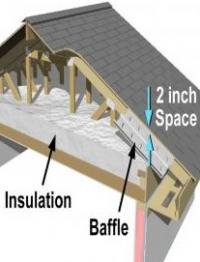Reflective insulation also known as foil insulation is essentially a barrier usually made from aluminum foil or aluminized polyester.
Reflective optimizing attic insulation.
How to install reflective foil in an attic.
If you re looking to improve your energy use check out these five different ways to make your attic more energy efficient.
Reflectix products are an excellent energy efficient choice for upgrading your attic system.
What are the right types of insulation for an attic.
Despite this it s easy to overlook the benefits of proper attic ventilation radiant barriers and energy efficient insulation.
It s easier to incorporate radiant barriers into a new home but you can also install them in an existing home especially if it has an open attic.
What insulation to use in the attic.
Blown in loose fill insulation such as fiberglass and cellulose is ideal for attics.
Always check labels for specifics on.
This reduction however is limited to solar gain from the attic about 22 of a home s cooling load.
Much like other forms of insulation reflective insulation may help reduce energy costs by blocking the heat that radiates from the sun onto your roof through your attic and on into your living space.
For diy attic insulation you ve got two choices.
Installation instructions and illustrated drawings are recommendations only while proper local construction methods are the responsibility of the installer.
The rubber meets the road on reflectix s website where it says no air space no reflective insulation benefit.
Loose fill or batt the common term for blanket insulation.
When installed properly a reduction of up to 10 in the home s air conditioning usage can result.
A low cost energy saving improvement to your home this silvertanium reflective attic insulation roll is non laminated and pliable.
An r 1 1 is provided from the product itself for the reflective double bubble material.
For use in attic spaces exterior and interior walls interior masonry walls radiant floors metal and steel buildings crawl spaces and garage.
In a new house an installer typically drapes a rolled foil radiant barrier foil face down between the roof rafters to.
Both can be added to uninsulated attics or layered over existing material.
The reflective insulation trade association also offers installation tips.
The attic space above a home is notoriously known for losing energy such as air conditioning or heating during the changing seasons.
If you don t provide air space this product provides almost no insulating value.
So even though research has found radiant barriers can deflect 40 of incoming attic heat the net savings represents only 8 to 10 of a building s total cooling costs.
The easy to use material is designed to stop 95 of radiant heat.















































